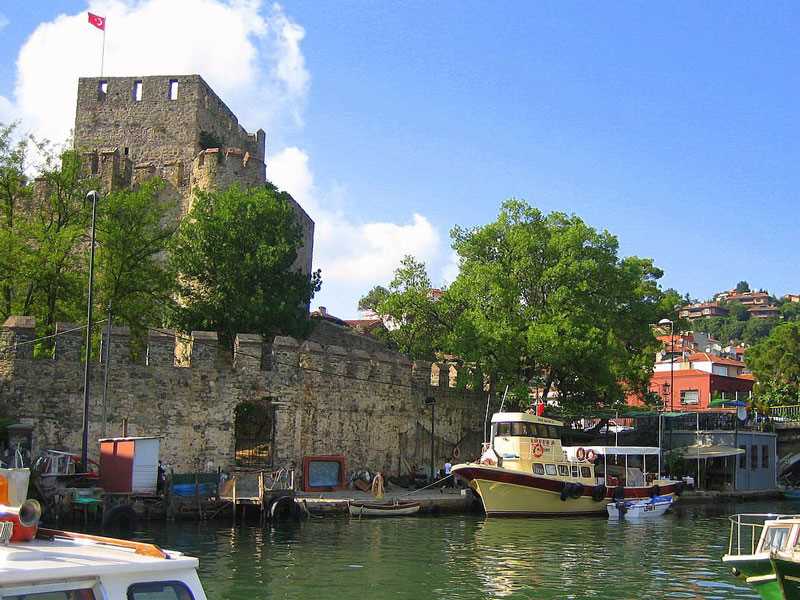Turkey has many archaeological sites that tell Turkey's history of mosques, palaces, churches and castles. Perhaps the most important of these castles is the fortress of Anatolia, the first fortress in Istanbul.
The fortress of Anatolia was built between 1393 and 1394 AD and ordered by Sultan Bazid the first on an area of 7000 m 2 in the narrowest point of the Bosphorus Strait. This fortress is located on the Asian Bank of the Bosphorus Strait. In order to prevent the entry of aid to the Byzantines through the Black Sea.
The fortress of Anatolia and its walls were built on a rocky hill, consisting of: the main castle, the inner castle, the inner and outer walls and three towers. The main castle is a rectangular tower, built on a rock covered with dirt. This 4-storey castle can be accessed through the door at the southwest end. The interior walls are also surrounded by the north-west and north-east, with four towers. The inner castle is a tower in the form of a rectangle with 4 tulips. The first floor did not have a door at the beginning, and the entry of the tower from a bridge to the inner walls, and ascends to the upper floors of a wooden staircase.
The fortress of Anatolia has a special place in the history of the Ottoman Empire. After the defeat of Sultan Beyazid I in front of Tamerlane in the Battle of Ankara in 1402, his son Suleiman Chalabi disappeared in the fort.
The fortress was used during the reign of Sultan Murad II, during the crossing of the Ottoman army to the Romans in order to prevent the crusader army of Hungary, and reached the Sultan Murad to this fort through the city of Yalwa. At that time, Chandrily Khalil Pasha protected Sultan Murad by firing artillery shells on the opposite shore. However, despite the existence of the papal and barricades, he crossed the coast safely.
The amendments made by Sultan Muhammad al-Fateh in 1452 contributed to the fortress of Anatolia by making it more powerful. The defensive fort has been turned into an offensive center.
After the conquest of Constantine, the fort was used to respond to attacks from the Black Sea. The fortress lost importance after the Ottoman Empire took control of the Black Sea in the 16th century.








